Deep Red
If my DVD collection has been correctly categorised then the R1 Anchor Bay DVD of Deep Red was the sixth (of 26) Dario Argento DVDs and BDs that I have bought (following, in order, Inferno, Dawn of the Dead, Suspiria, Two Evil Eyes and Tenebrae) and it has not been one that I have seen as much as I ought but that has been remedied in preparation for this review which has led to me watching the film no fewer than four times (three times on Blu-ray and once on DVD for comparison's sake).
Deep Red (Profondo Rosso, 1975) is, according to most critics, the finest film that Dario Argento has ever made and, even if you were to go with something like Tenebrae or Suspiria as his greatest work, you would be hard pushed to argue against this being the finest giallo film ever made and one that really saw Argento mature as a filmmaker and take his skills to a new level after the 'Animals' trilogy.
The film sees English jazz pianist Marcus Daly, known to everyone as Marc, who is working at the Conservatory in Rome, out in an empty piazza one night after rehearsals where he begins a conversation with a completely inebriated friend of his, Carlo, who is earning a crust at the Blue Bar, claiming that he plays better when he's drunk. Before Carlo wanders back into the bar, they both hear a scream and wonder if it's someone being murdered or raped, with Carlo toasting the woman with a rather misogynistic raising of his glass of the "deflowered virgin". When he disappears into the nightclub, Marc turns to see a woman, with a terrified look on her face, pressed up against the large glass window in her apartment (in the same block as Marc's home) and then the killer hits her again with a hatchet, forcing her through the window so she is impaled on broken glass.
The woman, Helga Ullmann, had been at a parapsychological conference earlier that evening as she is telepathic and, after displaying her gift by successfully guessing a stranger's name and that he had his hand in his pocket holding a bunch of four keys, one of them longer than the others, shrieked because she sensed a killer in the audience and what she found when reading the person's mind was utterly terrifying. Unbeknownst to her, what she thought was a residue of their thoughts in the auditorium was in fact the killer, now having donned the semi-obligatory black gloves, following her because she has told another member of the board that she knows the killer's identity.
Whilst she is in her apartment and talking to a friend of hers in Germany having made detailed notes about the killer, the doorbell rings and, even before she answers, she knows who is on the other side and, when the door is kicked in, she is methodically hacked with a meat cleaver, crawling to the window where she screams. When Marc runs up to the apartment, he lifts her from the broken glass, placing her carefully on the floor and looks outside where he sees a figure in a long dark raincoat and hat running across the piazza and round the corner.
When Marc entered the apartment, he made a mental note of the various strange paintings on the walls and, when being questioned by the police, he notices that something has changed but he's not exactly sure what as he only has an impression, not something definitive.
Whilst at the crime scene a local journalist, Gianna Breza, wanders in and takes some photographs, including a couple of Marc and, because the photo ends up on the cover of the newspaper, Marc and Gianna strike up an unlikely friendship as they both want to play amateur detective whilst the police are doing the official work (rather incompetently, a trait familiar to most gialli) and wondering what to do during a workers' strike. The problem is that the killer knows that Marc has seen something and begins killing everyone who may have incriminating information.
As the body count rises, it's up to Marc and Gianna to find out who is committing the murders, and why, before they end up being ruthlessly slain by a killer desperate to cover their tracks.
If you look at the history of the giallo subgenre, the key architect was probably Mario Bava who, with The Girl Who Knew Too Much and Blood and Black Lace, defined the cinematic giallo. The mantle was then taken up by Dario Argento whose 'Animals' trilogy (The Bird with the Crystal Plumage, Cat O' Nine Tails and Four Flies on Grey Velvet) brought the themes to public attention and proves that a giallo could be commercially successful. Everything that we think of as being intrinsic to a giallo was arguably developed in these three films and Deep Red, with the latter film as a giant in the horror genre and evidence that Dario Argento was not just a glorified screenwriter (he began his career working with Sergio Leone co-writing Once upon a Time in the West) but a director of real skill, flair and with the ability to make utterly terrifying movies. I suppose that, in terms of the whole gialli, the only things missing from this are J & B whiskey and some gratuitous female nudity!
I'm never quite sure which my favourite Argento film is as it will change every time I watch one of his movies and will switch between Suspiria, Tenebrae, Phenomena and Deep Red. I think Deep Red is probably his most accomplished when it comes to the narrative framework, acting, direction and editing as there are numerous scenes that are bravura pieces of filmmaking with a very long shot followed by some quick cuts (or the other way around) and with some remarkable camerawork such as the crane shot in the piazza which drops down to focus on Marc before panning around 180°. The film also marked Argento's first collaboration with Claudio Simonetti and his band, Goblin, who would go on to produce memorable scores for numerous Italian horror films.
The casting here is spot on with an excellent leading performance by David Hemmings who, fresh from Blow-up, was something of a coup for Argento and his production company. Daria Nicolodi, who would go on to form an extremely productive working relationship with the maestro and have a ten-year tempestuous marriage to Dario Argento, plays opposite Hemmings beautifully with plenty of zest and, if I didn't know to the contrary, would have guessed that their interplay was partly, if not wholly, improvised. There is a fine supporting cast including Macha Morel who plays Helga Ullmann and even Nicoletta Elmi, who plays the young girl Olga, is suitably creepy and strange and she went on to appear in Demons as an adult after having already appeared in A Bay of Blood, Flesh for Frankenstein and Footprints.
Deep Red had a slightly chequered and controversial release as there was one version for Italian audiences and another, 22 minutes shorter, for worldwide distribution. There are different versions of why this happened and it really depends on who you believe as to what you think happened in the editing studio which led to the English language version being cut down to remove most of the comedic or romantic scenes between Marc and Gianna and most of the story about The House of the Screaming Child. Furthermore, Helga Ullmann's funeral is cut down so it almost underplays her religion -- the fact that she is Jewish features heavily in the architecture and décor of her apartment and is, as Thomas Rostock explains in the commentary, is linked to the white telephones. It didn't help that previous UK releases were cut due to demands by the BBFC so a brief shot of two dogs fighting had to be removed as did a six second shot of a lizard, apparently suffering due to a pin stuck straight through its body. All previous cuts have been waived for this release, even the brief shot of the lizard, thanks to the hard work of the folks at Arrow Video who secured a statement from Dario Argento's production company stating that the pin was actually false and was a visual effect.
When George A. Romero announced his intention to remake the film in English and in 3-D, I wasn't sure whether it was a joke or something horrific new plan by the zombie-meister but it seems that he is sincere but the thought is horrifying. To me, it's like the recent remake of Let the Right One In: utterly pointless and people should be directed towards the original film rather than a remake of that will be inferior due to the originals brilliance.
With Deep Red having undergone a full high definition restoration, it is arguably now in the condition and state that Dario Argento would wish it to be seen for the first time ever in the UK.
The Disc
Extra Features
The commentary, by Finnish film critic and director Thomas Rostock, has clearly been well researched and is very nicely delivered by a man whose English is verging on fluent and with only the odd peculiar piece of pronunciation to give him away as someone who isn't English. He talks about the production process, the casting and the two different versions of the film and isn't afraid to get off the fence and give his opinion about who is responsible for the cut down English-language version. All in all, this is an enlightening and interesting commentary track that is well worth your time and attention.
The director's cut comes with an introduction by Claudio Simonetti who talks very briefly, saying that the film is a masterpiece and he is proud to be involved in its production. Sadly, I found the audio mix to be off as the dialogue comes through the rear surrounds as much as the centre channel but this isn't a major issue in the grand scheme of things.
The bulk of the extra features are on disc one and all of them are presented in 1080p high definition.
Lady in Red - Daria Nicolodi Remembers Profondo Rosso (20:39) was probably filmed at the same time as her contribution to the Inferno DVD/BD release and features Nicolodi, screenwriting collaborator and Argento's ex-wife talking about his career in general and specifically Profondo Rosso. She recalls how she read the script in one go, auditioned, why she had to change her hairstyle and working with Argento on set and the artistic influences that went into the way the film looks. Needless to say, she isn't afraid to blow her own trumpet and explain how she influenced Argento and expanded his horizons. She also doesn't hold back when talking about Argento, describing him as a narcissistic, hypochondriac egotist! The piece is very well put together with excerpts from this film, other Argento films and is framed in such a way that allows for clips from Deep Red to play in the top left-hand corner whilst you're watching her talk. Nicolodi speaks Italian for the bulk of the featurette, which is very well subtitled, but does lapse into English occasionally, a language which he speaks very well.
Music to Murder For! - Claudio Simonetti on Deep Red (15:26) is an interesting piece with Goblin's front man explaining how the band became involved with Dario Argento, what he wanted from them and the band's inspirations (Genesis, Emerson Lake and Palmer) and how they in turn inspired John Carpenter when he wrote the theme to Halloween. Interestingly, Simonetti does the whole piece in English, occasionally turning to his right to make sure he is using the right word, but is proficient enough in the language to adequately describe and explain all of the points fully. The piece is interspersed with clips from the movie and various pieces of artwork and album covers. Like Daria Nicolodi, he is also asked about Romero's 3-D remake and, like her, he is also reasonably downbeat about the prospect.
Rosso Recollections - Dario Argento's Deep Genius (13:59) features the director in the same room as he was seen in the extra features for Inferno, venting about his family and family as an institution, explaining why it feature so heavily in Deep Red, strenuously denying that Marc Daly is gay and the various different titles the film had around the world including The Hatchet Murders and even Suspiria 2 in Japan! He generally seems very relaxed and speaks with great freedom about many different aspects of the film including how the director's cut was pieced together and, like Daria Nicolodi and Claudio Simonetti, is asked about the prospect of a 3-D remake, something he dismisses out of hand because he dislikes remakes and no one has approached him about remaking Profondo Rosso.
After a break from Naomi Holwill's animated introductions on the Inferno release, they are thankfully back with some really interesting and quirky pieces of animation from one involving black gloves to another with hand drawn images from the film.
You also have the US and Italian theatrical trailers which are interesting in the different ways that they market the film.
Disc two contains the Theatrical Version and Rosso: From Celluloid to Shop (14:46) which is a guided tour around the Profondo Rosso shop in Rome by Luigi Cozzi, filmmaker, friend of Argento and the owner of what is, for fans of Argento's work, practically a shrine and a 'must visit' location. He begins by talking about how the shop came about -- designed as Italy's answer to Forbidden World -- before going on to how it developed into a museum and home for myriad props and other filmmaking memorabilia. This is a nice addition although it will contain spoilers for a variety of Argento films so I wouldn't watch this unless you have seen pretty much all of his movies.
Finally, the set comes with a double-sided fold-out poster, four different artwork choices on a reversible sleeve and a booklet with a new essay by Alan Jones, probably the leading authority on Dario Argento. It is touches like this that put Arrow Video's releases just ahead of other ones around the world as they have a collectable value.
The Picture
I was slightly sceptical about just how good this would look as A Bay of Blood didn't look as good as I hoped with contrast levels that were quite as deep as more recent films but this was probably due to the source material than the remastering process. Deep Red, on the other hand, looks absolutely stunning and is up there with films released in 2010 in terms of quality -- a testament to the restoration process and the 1080p picture.
Argento is a director who is meticulous about angles, framing and the technical aspects of filmmaking, sometimes to the detriment of his relationship with actors and this obsessive attention to detail makes Deep Red the masterpiece it is with some astonishing camera angles that really develop and enhance the sense of unease and horror and the editing, with some quick cuts between these obscure angles, makes this worth watching from a technical and even scholarly standpoint.
When it comes to the picture quality, the Full HD transfer is as good as any I've seen with incredible detail levels, vibrant and solid colours and blacks that are inky rather than grey. There are only a couple of scenes that aren't up there with the rest of the film, the very opening and a scene near the end (which I won't specify so as not to spoil the film) where the colours shift slightly and there is a hint of picture wobble. This is really just nitpicking as the majority of the film is absolutely stunning, especially the scenes with the 'snorkel camera' looking around the objects on black fabric where you can pick out every fibre and piece of lint on the cloth and, when it moves to the record player, see every groove in the vinyl.
The Sound
Given the choice of Italian tracks in DTS-HD Master Audio 5.1 or Dolby Digital 2.0 stereo (or DD 2.0 stereo English), I went for the first option and was amazed at its clarity, separation and just how well it presents the amazing score by Goblin. The stereo track isn't bad at all but it really misses out the depth of the sound and the sheer effect that the all-encompassing music has on the viewing experience.
Because of the original Italian version and the cuts that made an English language release possible, there are numerous scenes that have no English soundtrack so you can watch the Director's Cut with an English language soundtrack and have certain points where the English will disappear and the actors will speak Italian for several lines or you can just watch the whole film in Italian. The dubbing is very good and, rather you don't get to hear David Hemmings' voice, it is the easiest way to watch the film as there are no language changes.
If subtitles aren't your thing (and I have no idea why they wouldn't be), the International Version is entirely in English (DD 2.0 stereo). Personally, my preferred method of watching Profondo Rosso is the director's cut in Italian with English subtitles even though it is clear that most of the actors are speaking English so the synchronisation doesn't quite work.
There are several great pieces of music by Goblin in the film from the lullaby (School at Night) to Death Dies, the Mike Oldfield-inspired Mad Puppets and the terrific Profondo Rosso theme. The way that Argento uses the music is equally impressive, allowing it to build to what you expect will be a murder only to have the music drop away slightly and then deliver the shock. Perhaps the most impressive scene is when Marc is exploring the house of the screaming child with Mad Puppets playing only to have it suddenly stop when he steps on a piece of glass and then restart when a curtain drops.
The subtitles are very good, free from spelling or grammatical errors and easy to see against the picture.
Final Thoughts
Deep Red is a classic piece of horror and one of the greatest films that Dario Argento has ever made. I thought that the DVD was good but this Blu-ray quite frankly blows it out the water with a remarkable AV package that belies the film's age (just over 35 years) and makes it look as if it was filmed in the last year or so.
This package is truly the definitive release with a fine selection of extra features, both versions of the movie and superb picture and sound quality. If you are a horror fan and don't want to own this then you really need your head examining as it will be an early contender for one of the best releases of 2011.
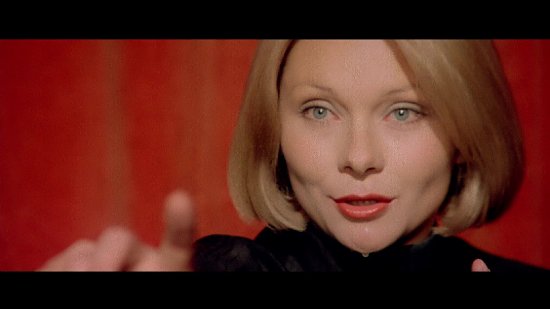
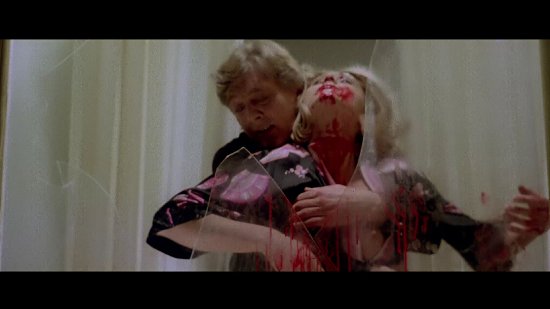
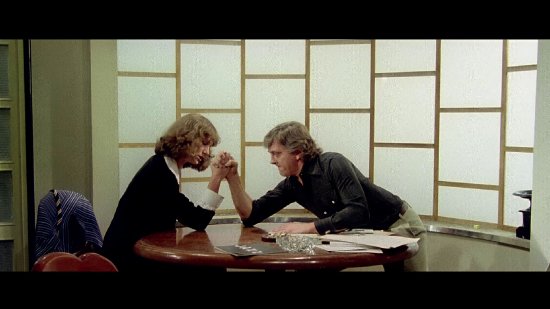
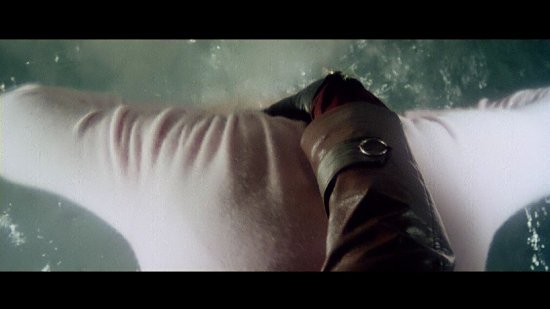
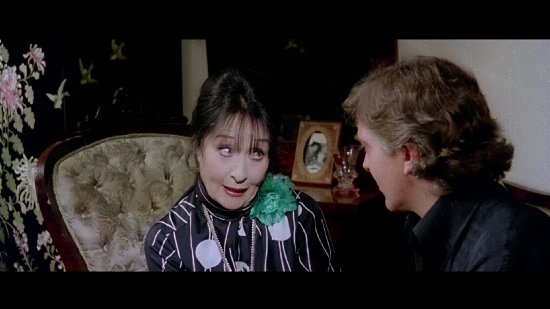
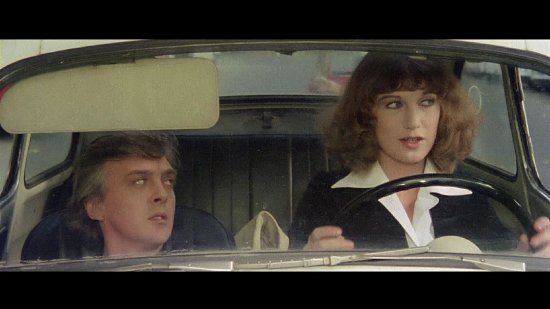
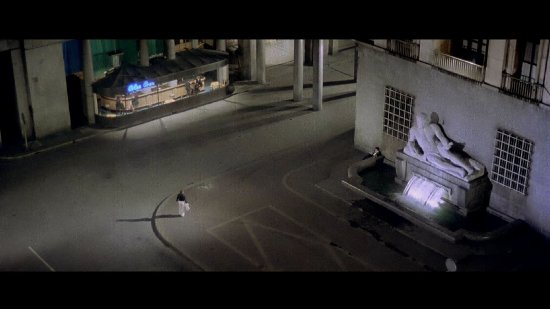
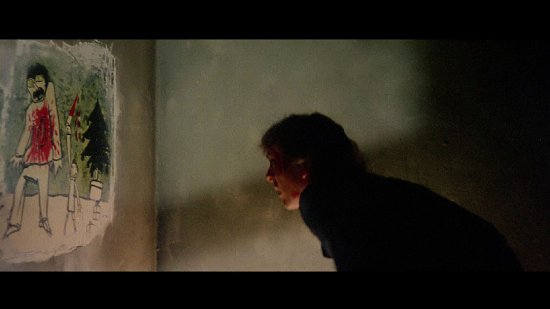
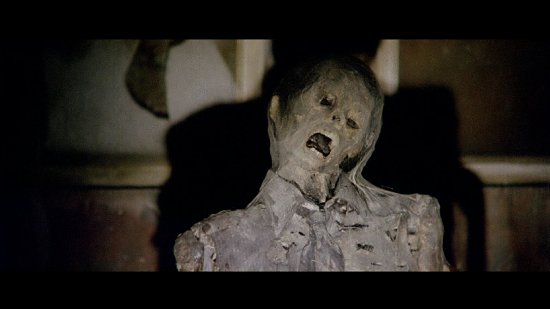
Your Opinions and Comments
Be the first to post a comment!